on wholeness and garden beds
I recently expanded the flower beds in my family's backyard in Nashville to fill up much more of the yard. Throughout my efforts I had Christopher Alexander's words on wholeness ringing in my ears.
...it is our responsibility, at every turn, to heal and make more whole, the structure of the world.
Chapter Nine of Book II ("The Process of Creating Life") of The Nature of Order is titled: "The Whole", subtitle: "each step is always is always helping to enhance the whole". Contained within is a passionate appeal for us to orient our every act towards enlivening the wholeness of the world (place) as we experience it.
When we look at Matisse drawing the woman's head and placing a dark mass in the area of her hair... the action does not so much have concern with a particular ringlet of hair, but to a far greater extent with the overall balance, coherence, and form *of the whole*. *That* is what dominates his activity. *That* is what makes the painting work. *That* is the mark of a great painter in his activity.
This seems rather obvious. But unfortunately, it is not obvious, and is, in the activity of our age, very far from obvious, in a vast number of accepted human activities— for example in the process of city planning and zoning.
(emphasis mostly mine)
He goes on to point out that wholeness is a quality of non-separateness with surroundings, interpenetration. Each "thing" which is to be whole must smear into its context so thoroughly as to become invisible. And yet each piece in a living whole is utterly unique and has a "special quality". This business of making wholeness is "immensely complicated: He admits. Thankfully living process– step-by-step transformations that always preserve and enhance the wholeness– is here to help. So long as at each step we concentrate on "the emergence of a new, living, breathing, feeling, whole".
At each step we are feeling out the latent centers– those places which are suggested by the geometry of the place but not quite fully formed or well-shaped yet. And once we sense them, we focus on enlivening them or making them more defined, less hazy.
All this is best carried out *first* in one's mind. Catching the merest glimmer of an idea, designers often rush to set it down in paper (or worse, pixels). But these media are far too definite for representing what we actually know so far. Suppose we know that a certain building should feel as though it towers over us. If we rush to draw it, we've by definition represented a certain proportion, scale, etc for the building (at the very least). A sketch or model inherently has much *more* information than we actually need at this stage, which is a feeling for the whole. Wholeness is not in the details and getting hung up in them at the wrong moment is ruinous.
Instead we use our imaginations. We form a vision of the emerging building– "what it is like to arrive to it, what the space in front of it is like, how the building forms the space... where its main rooms are, what their special beauty is..." in our minds where it can flow and shift rapidly and unfold unhindered. This vision *must* unfold step-by-step otherwise it's just as useless.
In each step we decide one small thing, then we move to the next. For my garden beds I decided: we need more garden, the garden goes roughly here, it should be shaped roughly like this, it should be divided into three new beds (five total), the first bed should have this shape... Only in our minds can we keep an eye on the hazy whole that we are enhancing as it unfolds– sketch "roughly here" and suddenly it's turned to *exactly there*. At each step in our mind, we check the feeling and we check the whole: does this have deep feeling? does this create life? And we do it in real life too. (For my beds I learned a lot of the sequence from faffing about with stones on the ground oops)
[At each step] I ask myself what the whole would be like if it had the most profound feeling as a whole I can imagine. I close my eyes. The answer comes autonomously.
Alexander leaves us with a painting of the Port of Oakland as he saw it out of his car window zooming off the bay bridge.
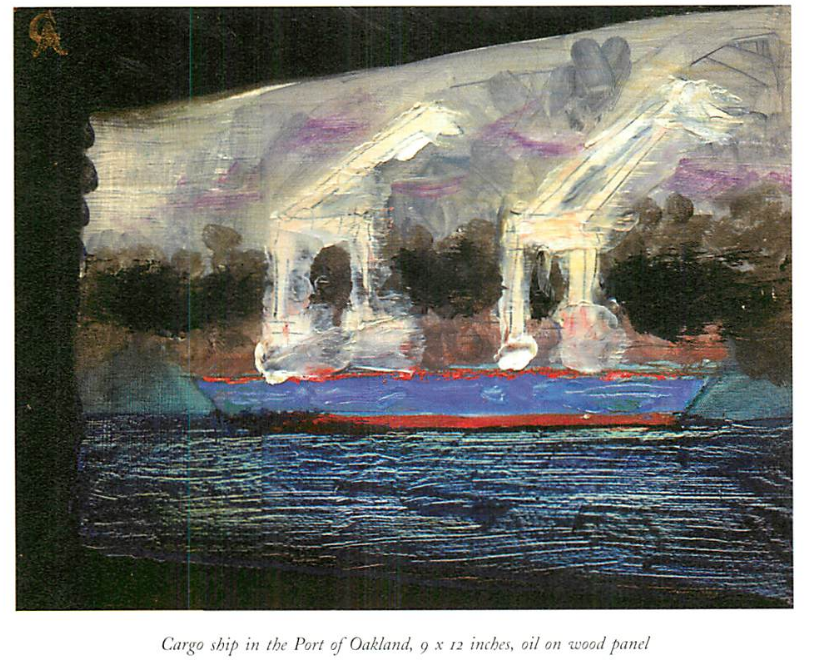
What I felt at that moment and remember even now, was the particular kind of light, the wholeness of the scene - not its details, but a particular colored light, which occurred as a whole. Later, in my studio, I began trying to re-create this wholeness. In doing this, I was not trying to make the scene realistic in the ordinary sense. I was not trying to paint the ship in detail, or the water in detail, or the bridge in detail. If I had been doing this, I would have been trying to build the wholeness from the details. But that would not have worked, and that is not what I did. I simply began placing colors on the paper, in the hope that the vivid life-filled light which I had seen would somehow begin to shine forth from the painting. That is what I cared about. So, I was not drawing from life, but trying to create a drawing which would give off life, making an autonomous construction (at first, in colored pencil on a piece of card, later in oils on a board).
When I began, the picture didn't have the real light of the actual scene at all, nor did it shine with the actual feeling I felt when I saw the scene. I tried a pinkish red, the stripes were too equal. I made the top one thinner. I made the red more red. I put deep ultramarine in the water. It became too sweet. I realized at a certain point that the blackness of the bridge members played a role, and I put them in not because of realism, but because the black changed the light. I made layers of gray behind the ship one of them almost black in order to make the others more brilliant. Much later, I decided to put violet streaks in the upper layers of fog. I have no idea if there was anything like that in the actual situation. But when I put in those flashes of violet, the boat began to shine in the way it really was shining when I saw the scene the day before. I had already tried pink, violeted gray, more white ... each time I noticed a change of some kind, but not the creation of the light.
It wasn't until I put the flashes of violet in the sky that the boat began to shine. The same with the small touches of light green near the cranes. Again, I don't know if there was anything like that it in the actual situation. The green doesn't represent trees, or grass, or green containers, or anything that I actually saw. What I know is that when I put in these touches of green, the cranes began to have a life, the wholeness began to shine with light, in a fashion something like the actual scene.
In the same way I made the cranes more white, less white, I made the light turquoise more blue, more green, more gray, kept on changing it, until it began to give out light. In the case of the water I remember what it actually was like, a very dark green turquoise. But I didn't try to capture the color I remembered...
To make wholeness, we have to abandon every other agenda besides that of making wholeness.
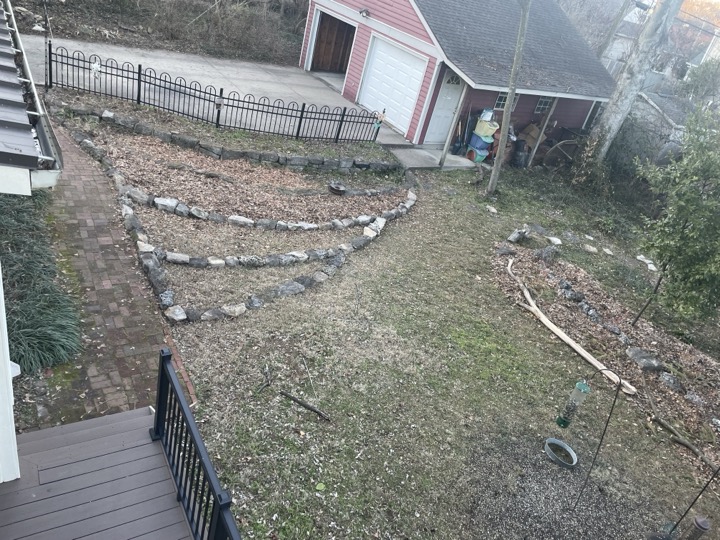
So I made some garden beds. Well first I wanted an outdoor project so I could work outside while I'm living here. So I was asking myself "what would you do if you loved everything that was here just how it is and wanted to make it more whole?" or "what's the most beautiful place I can imagine unfolding from the outdoor places here?" (a full bursting wild garden with paths and sit-spots and a little pond and abundant LIFE) and then "ok what's the very next step?".
My rough sequence was: deciding we need more garden, roughly placing the new garden beds, roughly shaping the overall shape of the bed, dividing it into three new beds (five total), shaping each bed one-by-one. Then in the future: mulching each bed, sowing seeds and tending the plants. I think the sequence mostly works. But I could have had a broader view of the wholeness– I was a little caught in just looking at the beds and their immediate surroundings. I wish I had been holding the whole garden-yard-house area in my mind as each step progressed. Paying attention to it now, other next steps appear for enlivening the yard. I would like to work on the shaping the nascent upper bed (visible at the far left of the image above), bringing it into relationship with the others and giving the open space in the middle a better shape. And paving the latent path with step-stones...
We have two flowerbeds that live next to the driveway. They are separated from the driveway by a metal fence and from the yard (and each other) by low stone walls.
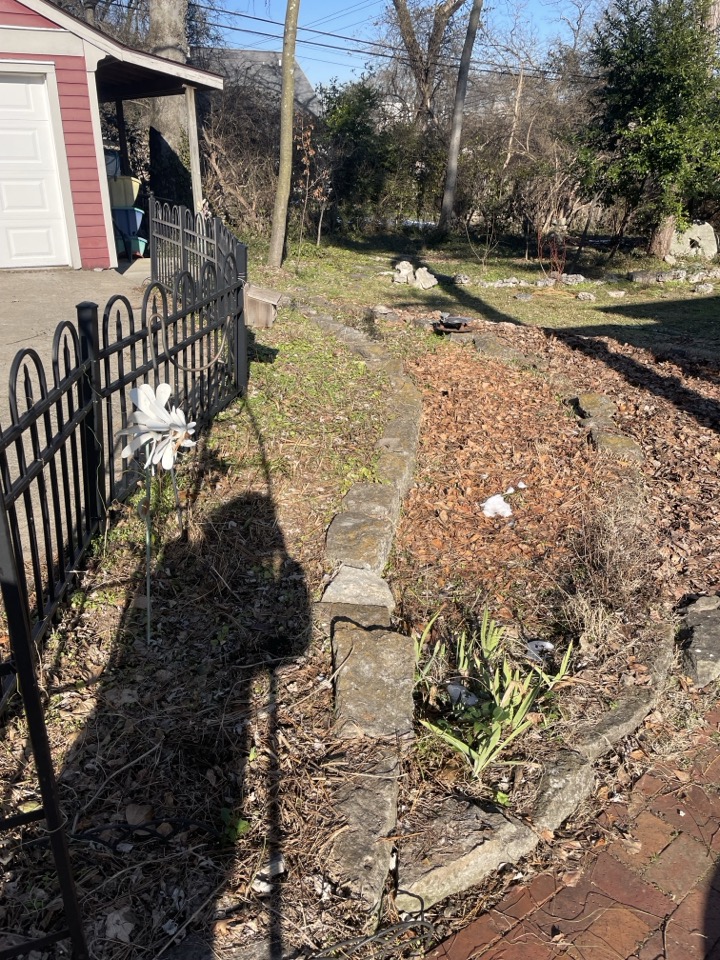
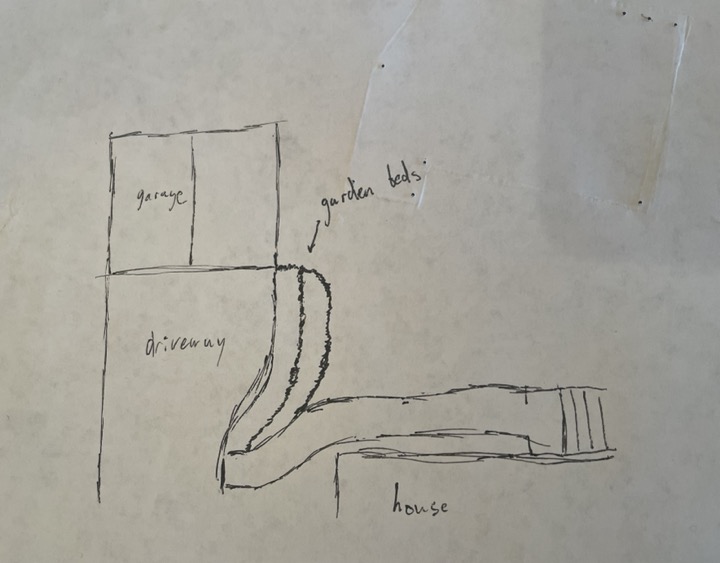
I love them. But they are an island of life between barren driveway, brick path, yard. I want to smear them into the yard, connect them to the house, connect them to the walkway... So first I tried something like this:
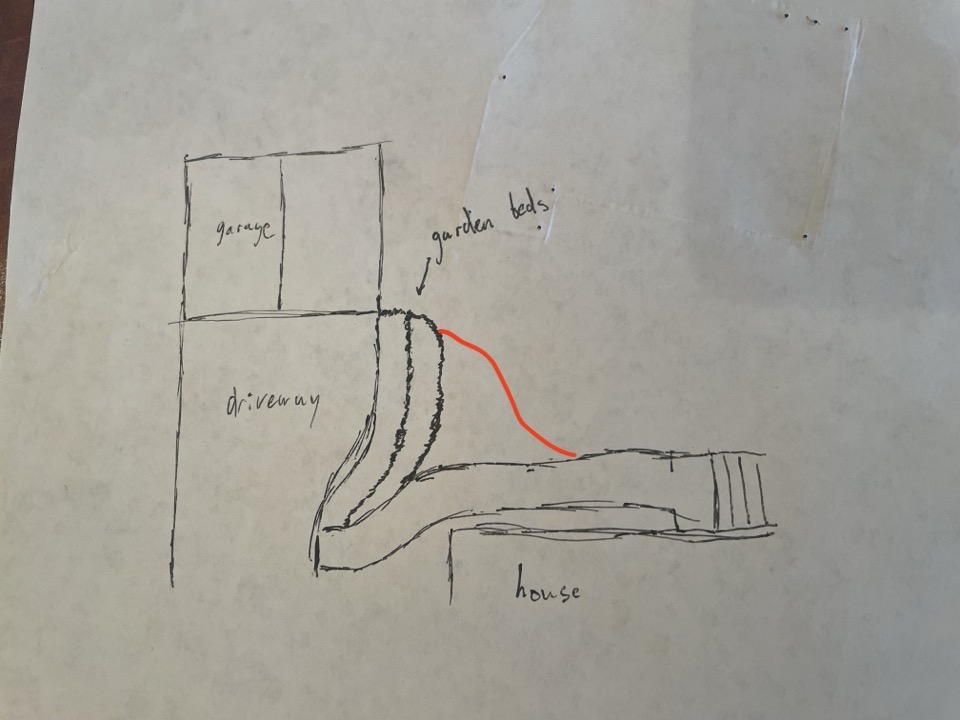
just laying it out with sticks. Seemed great but... no deep feeling at all. Just putting something there. No connection to wholeness.
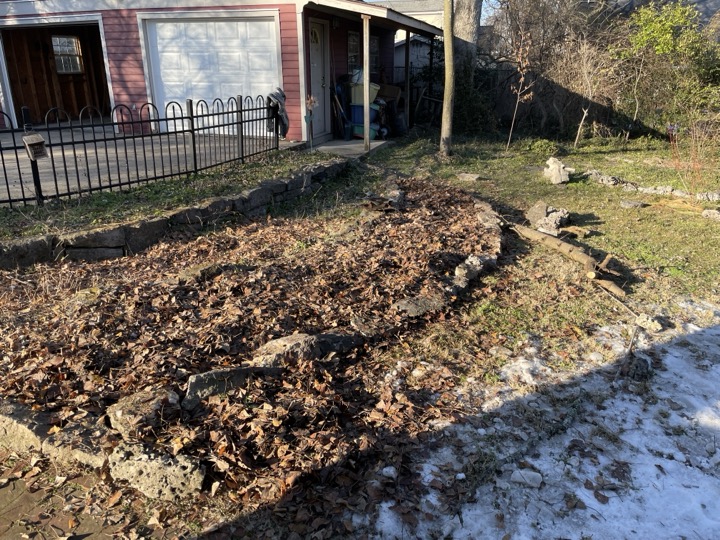
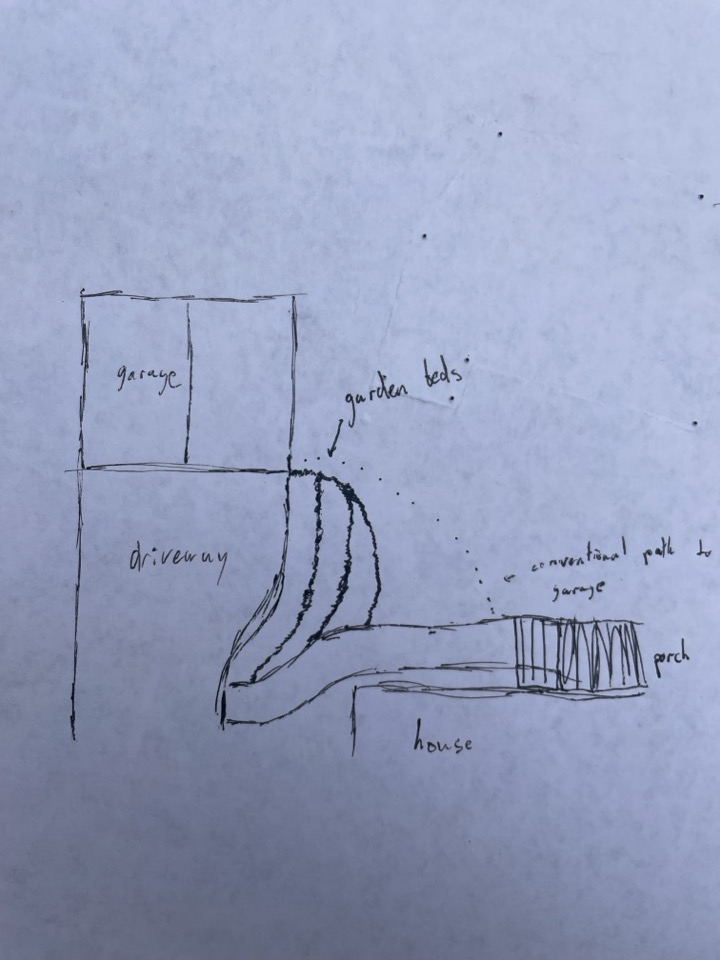
I tried to just make it a good shape. Just one more bed with a good shape, that felt natural, just another terrace, just another bed. Uniquely squeezed and stretched by taking up the right shape for its place. But one of a sequence. I don't think this one is quite it, but my sequence was all goofy– I decided to make another bed before getting this one right!
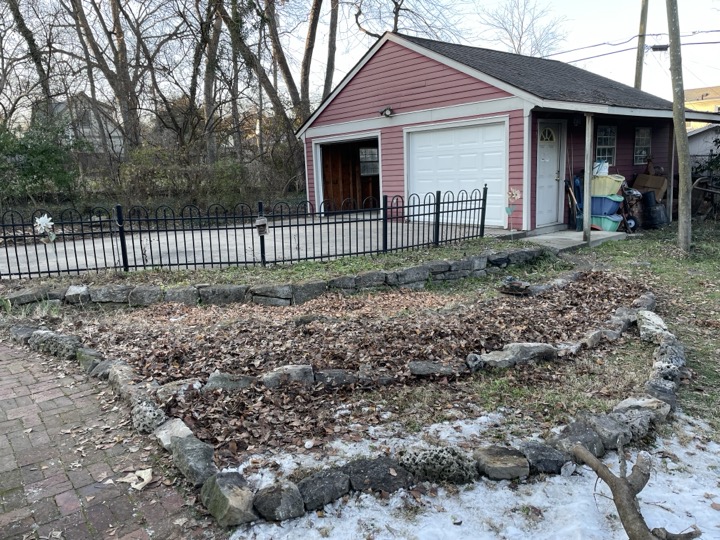
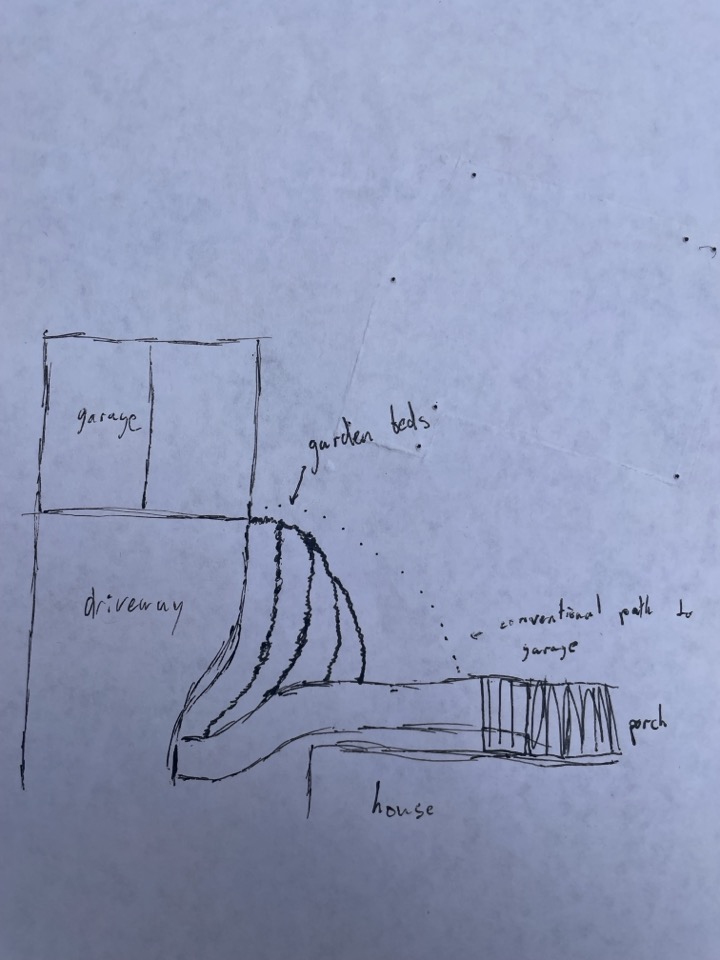
Two beds. Better shape. Starting to feel like a sequence but not quite. The drawings show better where it ended up. Eventually I realized that the wholeness of the beds owes a great deal to the outer curve feeling like one line, even as each bed splits off of it one-by-one. That helped a lot. Getting it right with stones was tricky but taking off my glasses, squinting helped me see the whole shape.
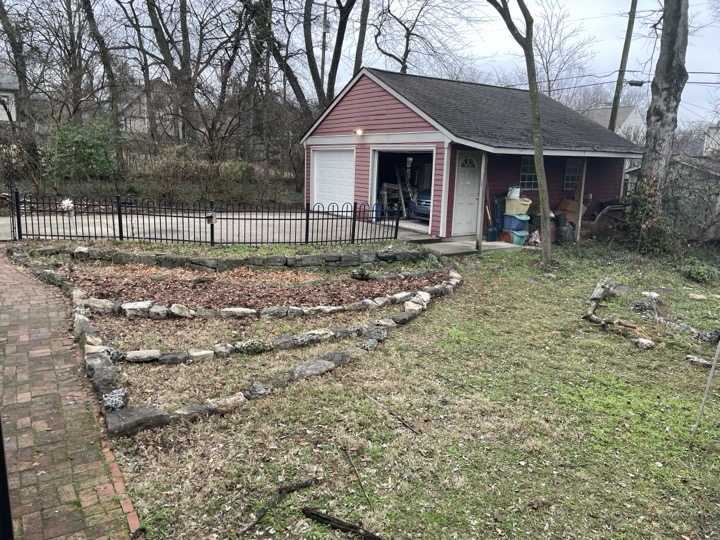
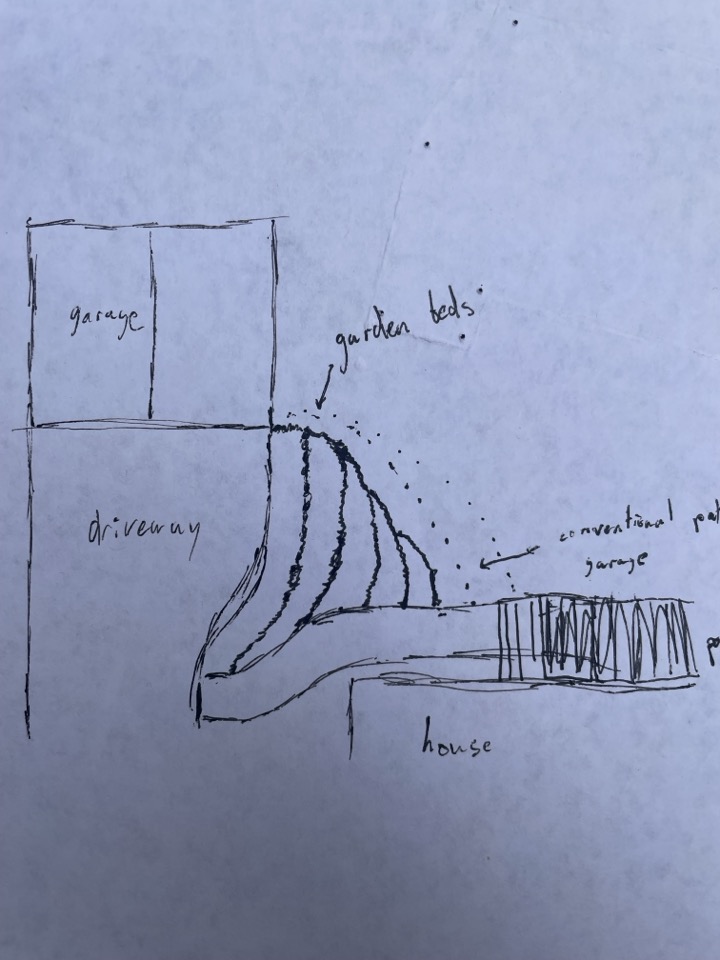
This is about it except for one corner stone that was too sharp messing it all up. "Is this humble enough to be a gift to G-d?" no no no not with that sharp stone in the corner!!
